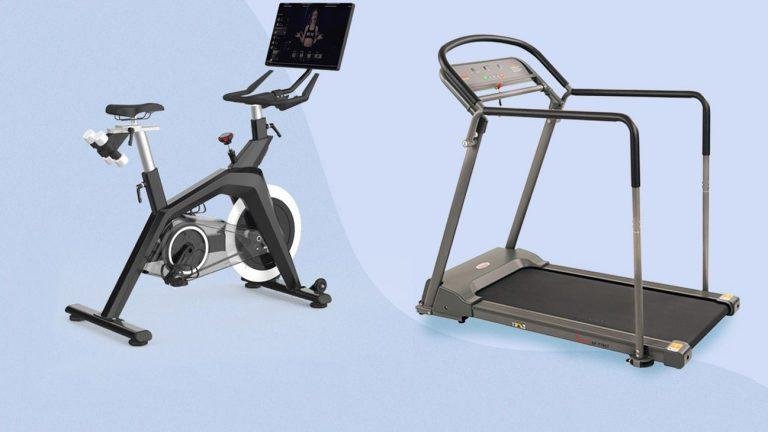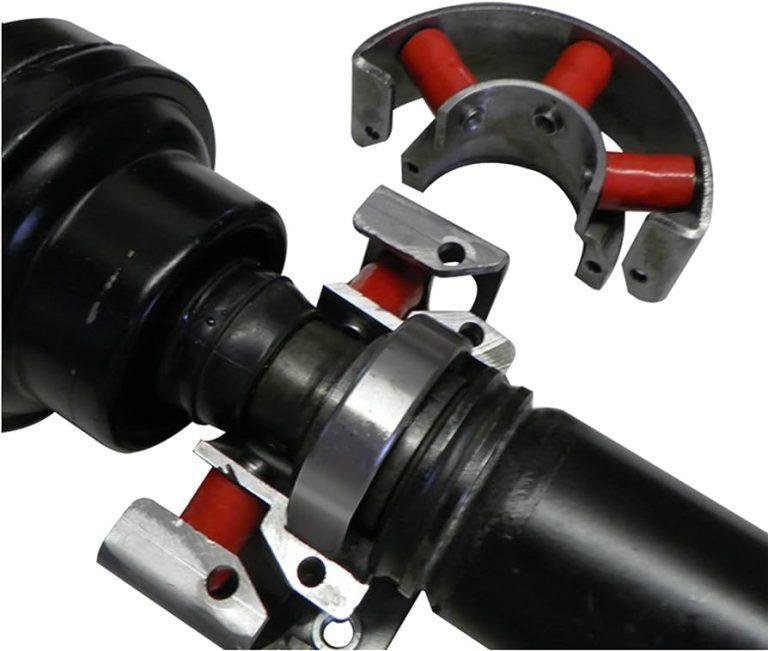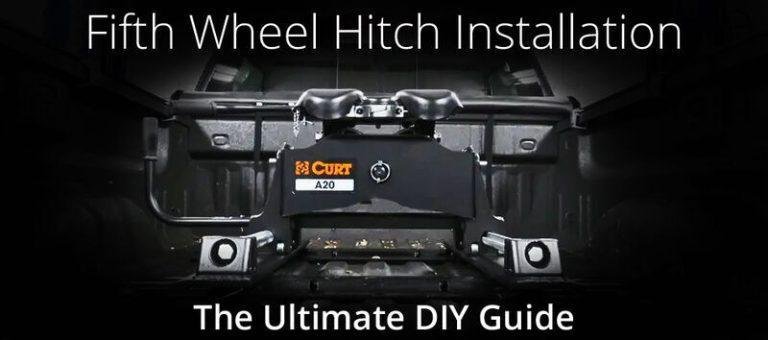A garage for a lift should be at least 12 feet tall, allowing for sufficient clearance and comfortable working space. Installing a lift in a garage requires careful consideration of the available space and height.
The minimum height requirement for a garage with a lift is typically 12 feet to accommodate the lift and provide enough clearance for vehicles. This ensures that the lift can be properly installed and used without any constraints or safety hazards.
It also allows for comfortable working space for mechanics or car enthusiasts who need to access the underside of the vehicles. Therefore, when planning to install a lift in a garage, it is crucial to ensure the garage height meets or exceeds the minimum requirement of 12 feet for optimal functionality and safety.

Credit: www.apartmenttherapy.com
Optimal Clearance Requirements For Garage Lifts
Garage lifts require a certain clearance height for optimal performance. To determine how tall a garage should be for a lift, it is essential to consider the lift’s maximum height and add sufficient clearance for the vehicle. This ensures safe and efficient lifting operations in a garage setting.
Understanding The Importance Of Garage Height For Lift Installations
Determining the right garage height for lift installations is crucial to ensure proper functionality and safety. Before diving into the optimal clearance requirements for garage lifts, it’s essential to understand why garage height matters. Here’s why:
- Lifts require enough overhead space to accommodate the raised vehicle without any obstructions.
- Inadequate clearance can lead to accidents, damage to the vehicle, or even injury to the user.
- Different types of lifts have varying height requirements, so it’s vital to choose the right one for your garage’s dimensions.
Factors To Consider When Determining The Right Height
When deciding on the height of your garage for lift installations, several factors should be taken into account. These include:
- Type of lift: Different types of lifts, such as two-post, four-post, or scissor lifts, have varying height requirements. Research the specifications of the lift you plan to install to determine the necessary clearance.
- Vehicle size: Consider the size of the vehicles you will be lifting. Larger vehicles typically require more clearance to ensure they fit comfortably.
- Ceiling height: Measure the ceiling height of your garage. This measurement will determine the maximum height your lift can accommodate.
- Building codes: Check with local building codes to ensure compliance with any specific height requirements for garage lifts. Building codes can vary by location.
Industry Recommendations For Optimal Clearance
To ensure safe and efficient operation of garage lifts, industry recommendations exist for optimal clearance. These recommendations are based on extensive research and experience in the field. Here are some general guidelines:
- Two-post lifts: Most two-post lifts require a ceiling height of at least 12 feet for proper installation and operation. However, some models may have different requirements, so it’s crucial to check the manufacturer’s specifications.
- Four-post lifts: Four-post lifts generally require a slightly higher ceiling height compared to two-post lifts. A minimum height of 12-14 feet is recommended.
- Scissor lifts: Scissor lifts typically require the highest clearance due to their horizontal movement mechanisms. A ceiling height of 15 feet or more is often recommended to accommodate scissor lifts safely.
Remember, these are just general recommendations, and it’s essential to consult the specific manufacturer’s guidelines for your chosen lift. Additionally, always prioritize safety by ensuring ample overhead clearance to prevent accidents and damage.
By understanding the importance of garage height, considering various factors, and adhering to industry recommendations, you can determine the optimal clearance requirements for your garage lift installation. These measures will ensure smooth operation and safety for all your vehicle lifting needs.
Assessing Your Garage Space
When determining the appropriate height for a garage with a lift, it is important to consider the size and type of vehicles you plan to store. By assessing your garage space and understanding your specific needs, you can determine the ideal height for a lift installation.
Measuring The Height Of Your Garage:
- Before deciding on the height requirements for a lift in your garage, it is crucial to accurately measure the available space. Here are the steps to help you determine the height of your garage:
Considering Any Existing Obstacles Or Limitations:
- Your garage may have certain obstacles or limitations that need to be taken into account when determining the optimal height for a lift. Consider the following factors:
- Ceiling height: Measure the distance between the floor and the lowest point of your garage ceiling. This measurement will be crucial in determining whether your garage can accommodate a lift.
- Overhead storage: Take into consideration any overhead storage units, shelves, or racks that could interfere with the installation and operation of a lift. Ensure that there is adequate clearance for both the lift and any vehicles you intend to raise on it.
- Lights and fixtures: If your garage has hanging lights or fixtures, make sure to factor in their height. You don’t want any collisions or restrictions when using the lift.
- Door clearance: If your garage has an overhead door, check the clearance when fully opened. Ensure that there is enough space for the lifted vehicle to pass under the door without any issues.
Determining If Modifications Are Necessary:
- After measuring the height of your garage and considering any existing obstacles or limitations, you might find that modifications are necessary to accommodate a lift. Here are a few considerations:
- Raising the ceiling: If your garage has a low ceiling and you require more height for a lift, you may need to explore options for raising the ceiling. Keep in mind that this could involve significant construction work and additional costs.
- Removing obstructions: In cases where there are obstacles obstructing the required clearance for a lift, such as shelves or racks, you may need to remove or relocate them to create sufficient vertical space.
- Modifying lighting and fixtures: If lights or fixtures are impeding the proper operation of a lift, they may need to be adjusted or replaced with alternatives that won’t interfere with the lift’s functionality.
- Choosing a lower-profile lift: If your garage simply doesn’t have enough space for a traditional lift, consider exploring lower-profile lift options that require less overhead clearance.
Remember, assessing your garage space accurately is crucial in determining the ideal height for a lift. Taking into consideration existing obstacles or limitations will help you identify whether modifications are necessary to make your garage lift-friendly.
Common Garage Lift Types And Their Clearance Requirements
Garage lifts come in different types with varying clearance requirements. To determine the height needed for a garage lift, consider factors such as the type of lift and the vehicle being lifted. Proper clearance ensures safe and efficient operation.
Garage lifts are a valuable addition to any home or commercial garage, providing a convenient solution for vehicle maintenance and storage. However, determining the optimal height for your garage when considering a lift can be a crucial factor in ensuring a safe and efficient workspace.
In this section, we will explore the common types of garage lifts and the clearance requirements associated with each.
Single-Post Lifts: Optimal Clearance Recommendations
When it comes to single-post lifts, there are a few important considerations to keep in mind regarding clearance requirements:
- Ceiling height: A minimum garage ceiling height of 12 feet is recommended to accommodate the installation of a single-post lift.
- Lifting height: Single-post lifts typically require additional space above the vehicle when lifting. Therefore, it is advisable to have an extra 3 to 4 feet of clearance above the maximum height of the lifted vehicle.
Two-Post Lifts: Ideal Height Requirements
Two-post lifts are among the most popular choices for garage lifts. Here are the ideal height requirements to ensure proper installation and operation:
- Garage ceiling height: To accommodate a two-post lift, a minimum ceiling height of 11 to 12 feet is generally recommended.
- Lifting height considerations: Depending on the specific two-post lift model, additional overhead clearance may be necessary. This ensures that the lifted vehicle, along with any attachments or accessories, can fit comfortably within the space.
Four-Post Lifts: Considerations For Ceiling Height
Four-post lifts offer excellent stability and versatility, making them suitable for various garage applications. However, ceiling height must be carefully evaluated due to specific design features:
- Standard clearance: A typical four-post lift requires a ceiling height of around 9 to 10 feet. This allows enough space for the raised vehicle to comfortably fit within the garage.
- Bridge jacks or attachments: If you plan to use bridge jacks or attachments with your four-post lift, consider the additional height requirements. Ensure that the ceiling height caters to the maximum elevation of the raised vehicle, accompanying attachments, and any potential adjustments needed for optimal working conditions.
By understanding the clearance requirements for different garage lift types, you can ensure that your garage space is suitable for safe and efficient lifting operations. Remember to consider both the lift itself and any additional accessories or attachments to make informed decisions regarding your garage’s height requirements.
Calculating The Height Difference For Vehicle Clearance
Calculating the height difference for vehicle clearance is crucial when determining the necessary height of a garage for a lift. Being mindful of clearance requirements ensures safe and efficient usage of the lift without causing damage to the vehicle.
Understanding The Required Height Difference For Vehicle Clearance
When it comes to installing a lift in your garage, it’s crucial to ensure that you have sufficient height clearance for your vehicle. The height difference needed will depend on various factors, including the type of vehicle you own and any additional clearance required for safety and convenience.
Here’s what you need to consider:
- Accounting for the height of the vehicle: The first step is to determine the maximum height of your vehicle when it’s fully raised. Measure from the ground to the highest point, which may include roof racks, antennas, or other accessories. This measurement will serve as the baseline for calculating the necessary height difference.
- Factoring in additional clearance: In addition to the vehicle height, you’ll need to account for additional clearance to ensure safe and convenient usage of the lift. Here are a few factors to consider:
- Headroom: The distance between the fully raised vehicle and the ceiling of your garage will impact your ability to move around and perform maintenance tasks. Aim for a minimum headroom clearance of around 6-12 inches to provide sufficient space.
- Door clearance: If your garage has a door that opens outward or upward, make sure you have enough clearance to operate it without any obstructions. Take into account the height of the open door and any tracks or mechanisms that may require extra space.
- Tire clearance: Ensure that there’s enough space for the lifted vehicle’s tires to turn without hitting the ceiling or any nearby structures. Consider the tire diameter and add extra clearance to accommodate full steering rotation.
Remember, these additional clearance measurements will vary depending on the specific lift you choose and your garage’s layout. It’s always a good idea to consult the lift manufacturer’s guidelines for their recommended height clearance requirements.
Installing a lift in your garage can provide convenience and ease of access for vehicle maintenance and storage. By accurately calculating the height difference needed for vehicle clearance and factoring in additional clearance for safety and convenience, you can ensure a successful lift installation that meets your specific needs.
Modifications For Insufficient Garage Height
A garage with insufficient height for a lift may require modifications to accommodate the equipment. It is important to determine the appropriate height for your garage to ensure safe and efficient use of a lift.
If your garage doesn’t meet the required height for installing a lift, there are a few options you can consider. Making modifications to increase the ceiling height can be a solution, although it may come with its own set of challenges and considerations.
Here are some strategies to tackle the issue:
Options For Increasing Ceiling Height:
- Evaluate the existing structure: Before making any modifications, it’s crucial to consult professionals who can assess the structural integrity of your garage. They will be able to tell you if it’s feasible to make any changes to the ceiling height without compromising the stability of the building.
- Raise the roof: If your garage has a pitched roof, one option could be to raise the roofline to gain extra height. This may involve removing the existing roof and constructing a new one with a higher pitch. However, keep in mind that this is a major renovation that should only be undertaken with the guidance of experienced contractors.
- Lower the floor: Another possibility is to lower the floor level of your garage. This can be accomplished by excavating and removing a portion of the foundation. However, this method is quite invasive and can be expensive, requiring expert knowledge and permits to ensure the safety and legality of the modification.
- Modify the ceiling structure: Depending on the construction of your garage, it might be possible to modify the ceiling structure to gain additional height. This could involve removing certain beams or trusses and replacing them with shallower alternatives, if allowed by building regulations. It is essential to consult with a structural engineer or architect to determine the feasibility and safety of this option.
Cost Considerations For Height Modification:
- Budget for professional help: When considering modifications to increase the ceiling height of your garage, it’s important to budget for professional assistance. This could involve hiring an architect, structural engineer, and contractors to ensure the work is done correctly and safely.
- Construction costs: Modifying the ceiling height of a garage can be a complex and labor-intensive process. The cost will depend on factors such as the existing structure, the extent of modifications needed, and local labor and material prices. It’s advisable to obtain multiple quotes from reputable contractors to get a clear idea of the overall expenses involved.
- Additional expenses: Keep in mind that modifying the garage’s height may also require additional changes, such as relocating electrical wiring, hvac systems, or other utilities. These expenses should be factored into your budget to avoid any surprises during the construction process.
Consulting Professionals For Structural Evaluations:
- Engaging experts: When dealing with modifications that affect the structural integrity of a building, it’s crucial to work with professionals who specialize in construction and engineering. An architect or structural engineer can assess the feasibility of increasing the ceiling height and provide guidance on the appropriate modifications.
- Ensuring safety and legality: Structural evaluations by professionals will ensure that any modifications meet safety standards and building codes. This step is crucial to protect both the stability of your garage and the safety of its occupants. Consulting experts will also help you navigate any necessary permitting processes required by local authorities.
- Avoiding diy risks: Attempting to modify the ceiling height without professional guidance can lead to costly mistakes or compromise the structural integrity of your garage. It’s best to leave this type of work to experienced professionals who have the necessary skills and knowledge.
Remember, modifying the ceiling height of your garage is a complex process that should be approached with caution. Consulting professionals and budgeting for the necessary expenses will help you make informed decisions and achieve the desired height for installing a lift.
Safety Considerations And Regulations
The height of a garage for a lift depends on safety considerations and regulations, which vary by location. It is important to meet these requirements to ensure the safe operation of the lift and minimize the risk of accidents or damage.
Consider consulting local building codes or a professional before installing a lift in your garage.
Ensuring Proper Safety Measures For Garage Lifts:
- It is crucial to prioritize safety when installing a garage lift. Here are some key considerations to keep in mind:
- Equipment quality: Opt for lifts that are manufactured by reputable brands and meet industry standards for durability and safety.
- Weight capacity: Ensure that the lift you choose has an adequate weight capacity to handle the vehicles you’ll be lifting.
- Sturdy construction: Look for a lift that is solidly built, with strong materials and secure fastenings to prevent accidents.
- Safety features: Check that the lift includes essential safety features such as automatic safety locks, hydraulic safety systems, and safety cables. These features provide added protection in case of mechanical failure.
- User training: Properly train all individuals who will be using the lift to ensure they understand safe operating procedures and precautions.
- Clear workspace: Maintain a clutter-free and well-organized workspace around the lift to prevent tripping hazards and ensure ease of operation.
Complying With Local Regulations And Codes:
- Before installing a garage lift, it’s essential to adhere to local regulations and codes. Here are some important factors to consider:
- Building permits: Check with your local authorities to determine if you need a permit for installing a garage lift. Obtain the necessary permits to ensure compliance with local regulations.
- Height requirements: Familiarize yourself with the height restrictions set by your local regulations. Ensure that the garage ceiling is tall enough to accommodate the lift’s height and the raised vehicles.
- Electrical considerations: Consult with a licensed electrician to ensure that the electrical system in your garage can handle the power requirements of the lift. Follow all electrical codes and safety guidelines during installation.
- Weight limits: Be aware of any weight limits or restrictions imposed by local regulations. Abiding by these limits is crucial for the safe operation of the lift and the overall structural integrity of the garage.
Importance Of Professional Installation And Inspections:
- To ensure the safety and optimal functioning of your garage lift, it is essential to rely on professional installation and regular inspections. Here’s why:
- Expertise: Professional installers possess the necessary knowledge and experience to install the lift correctly and safely. They can also provide guidance on choosing the right lift for your garage and ensure proper integration with your existing infrastructure.
- Compliance: Professional installers are well-versed in local regulations and codes. By hiring them, you can be confident that your lift will meet all necessary standards.
- Preventive maintenance: Regular inspections by professionals can identify and address any issues or potential risks before they escalate. This proactive approach helps prevent accidents and ensures the lift’s longevity.
- Warranty coverage: Many lift manufacturers require professional installation to maintain warranty coverage. By choosing professional installation, you can avoid any potential warranty disputes.
Remember, safety should always be the top priority when considering a garage lift installation. By following safety measures, complying with regulations, and relying on professional expertise, you can enjoy the benefits of a lift while minimizing risks.
Optimal Organization And Storage Solutions
Discover the optimal garage height needed for installing a lift to maximize organization and storage solutions. Find out the ideal dimensions to efficiently accommodate your lifting needs without compromising on space.
Having a garage with a proper lift can greatly enhance your vehicle maintenance and storage capabilities. However, it’s important to consider the optimal organization and storage solutions to ensure maximum functionality and efficiency in your garage. By utilizing available vertical space for storage, combining lift installations with overhead storage systems, and implementing clever organization strategies, you can make the most of your garage space.
Utilizing Available Vertical Space For Storage:
- Install wall-mounted shelving units: Utilize the vertical space on your garage walls by installing sturdy shelving units. These will provide additional storage for tools, equipment, and other garage essentials.
- Use pegboards or slatwall systems: Hanging pegboards or slatwall panels on your garage walls will allow you to hang various tools and accessories, keeping them within easy reach and freeing up valuable floor space.
- Invest in ceiling-mounted storage racks: Install ceiling-mounted storage racks in your garage to store items such as seasonal gear, unused sports equipment, or even large bins. This will help maximize your vertical storage space.
Combining Lift Installations With Overhead Storage Systems:
- Install a car lift with integrated storage: Some car lift systems come with integrated storage solutions, such as built-in shelving or cabinets. This allows you to lift your vehicle while also providing additional storage space for tools and equipment.
- Utilize the space above the lifted vehicle: When using a car lift, take advantage of the space above the lifted vehicle by installing overhead storage shelves or racks. This will make efficient use of the vertical space in your garage.
Maximizing Functionality And Efficiency In The Garage:
- Create designated zones for different activities: Divide your garage into functional zones such as an automotive workspace, a storage area, and a workshop. This will help you stay organized and easily locate the items you need for each activity.
- Utilize rolling storage solutions: Invest in mobile storage carts or tool chests with wheels. This allows you to easily move your tools and equipment around as needed and helps minimize clutter in your garage.
- Label and categorize storage containers: Use clear labeling and categorization systems for storage containers, ensuring everything has its designated place. This makes it easier to find and access items quickly.
- Implement a regular decluttering routine: Regularly assess the items in your garage and declutter any unnecessary clutter or items you no longer need. This will help keep your garage organized and maximize the available space.
By implementing these optimal organization and storage solutions, you can create a well-organized and efficient garage space. This will not only enhance the functionality of your lift installation but also provide you with a clutter-free and enjoyable workspace.
Maintenance And Upkeep For Garage Lifts
Garage lifts require sufficient vertical space for proper utilization, making garage height an important consideration. Adequate garage height is essential to ensure safe and efficient operation of the lift, accommodating both the raised vehicle and the operator. Regular maintenance and upkeep of garage lifts are crucial to ensure their longevity and optimum performance.
Regular inspections and maintenance for smooth operation:
- Conduct routine inspections: Regularly inspect the entire lift system, including cables, hydraulic components, and safety mechanisms, for signs of wear and tear.
- Check for loose or damaged parts: Ensure that all nuts, bolts, and fittings are securely tightened and that there are no cracked or broken components.
- Monitor fluid levels: Regularly check hydraulic fluid levels and top up if necessary to ensure proper lift operation.
- Examine safety features: Test emergency stop buttons, safety locks, and overload protection mechanisms to verify they are functioning correctly.
Lubrication and cleaning tips for lift components:
- Lubricate moving parts: Apply appropriate lubricants to hinges, pivots, and other moving parts of the lift to minimize friction and ensure smooth operation.
- Clean lift components: Regularly remove dirt, grease, and debris from the lift components, including cables, pulleys, and guides, to prevent buildup that can impede functionality.
- Use appropriate cleaning agents: Select cleaning agents that are specifically designed for the materials used in the lift components to avoid damaging them.
Troubleshooting common lift issues:
- Lift fails to raise or lower: Check the power source and ensure that it is connected and functioning correctly. Inspect the hydraulic components for leaks or an insufficient fluid level.
- Unusual noises during operation: Investigate the source of the noise, which may be loose or worn components, insufficient lubrication, or a misalignment.
- Alignment problems: If the lift is not properly aligned, causing difficulties in vehicle positioning, check the leveling system and make necessary adjustments.
Remember, regular inspections, timely maintenance, and proper lubrication are essential for the longevity and safe operation of your garage lift. By following these maintenance and upkeep practices, you can ensure a smooth and hassle-free experience with your garage lift.
Frequently Asked Questions (Faqs)
The ideal height for a garage with a lift varies depending on the type of lift you want to install. It is recommended to have a minimum clearance of 14 feet for a two-post lift and at least 12 feet for a four-post lift.
Consider the space requirements of your vehicle and the lift’s specifications for a suitable garage height.
What Is The Minimum Height Requirement For Garage Lifts?
- The minimum height requirement for garage lifts typically depends on the type of lift being installed.
- Two-post lifts generally require a minimum ceiling height of around 12 feet, taking into account the height of the lift itself and additional clearance for the vehicle being lifted.
- Four-post lifts, on the other hand, usually require less headroom, with a minimum ceiling height of around 9 feet.
Can A Standard Residential Garage Accommodate A Lift?
- Yes, a standard residential garage can accommodate a lift. However, it’s crucial to consider the garage’s dimensions before proceeding with the installation.
- Factors such as ceiling height, floor space, and structural integrity must be assessed to determine if the garage can accommodate the lift equipment and provide sufficient clearance for the vehicles.
How Do I Determine The Right Lift Height For My Specific Needs?
- To determine the right lift height for your specific needs, you should consider the types of vehicles you plan to lift.
- Measure the tallest vehicle and add some clearance on top to ensure enough space for safe operation.
- It’s recommended to consult with an expert or a lift manufacturer to determine the ideal lift height based on your requirements.
Are There Any Weight Restrictions For Garage Lifts?
- Yes, there are weight restrictions for garage lifts. Lifts are designed to handle specific weight capacities, so it’s crucial to select a lift that can handle the weight of your vehicles.
- The weight capacity of a lift can vary, typically ranging from around 6,000 pounds to over 15,000 pounds.
- Ensure that the lift you choose has a weight capacity that exceeds the combined weight of the vehicles you plan to lift.
Can I Install A Lift In A Detached Garage?
- Yes, you can install a lift in a detached garage. However, it’s important to consider the garage’s structural integrity and dimensions.
- Ensure that the garage is built to handle the additional weight and stress that a lift will exert on the floor and structure.
- Consulting with a structural engineer or a professional installer is recommended to ensure the safety and feasibility of installing a lift in a detached garage.
What Are The Common Safety Features Of Garage Lifts?
- Garage lifts come with various safety features to protect users and prevent accidents during operation. Some common safety features include:
- Safety locks: These secure the lift arms or ramps in place to prevent unintentional lowering of the vehicle.
- Safety cables: These act as a backup in case of hydraulic failure, preventing the lift from collapsing.
- Overload protection: This feature automatically stops the lift if the weight capacity is exceeded, preventing damage or accidents.
- Automatic lowering system: This feature ensures controlled and gradual lowering of the lift, enhancing safety during vehicle descent.
- Emergency stop button: This allows users to quickly stop the lift in case of an emergency or unsafe conditions.
Remember, when it comes to installing garage lifts, it’s crucial to ensure they are properly installed and maintained to ensure optimal safety and performance. Consult with professionals and follow all safety guidelines provided by the lift manufacturer.
Conclusion (Optional)
How tall should a garage be for a lift? The height of a garage should accommodate the lifting height of the vehicle plus the height of the lift itself, typically an additional 12 feet from the floor to the ceiling is recommended for a standard car lift.
Garage height is a critical factor to consider when installing a lift. It not only affects the safety and functionality of the lift but also determines how efficiently you can utilize your garage space. In this section, we will recap the key considerations for determining the optimal garage height for lift installations and discuss the importance of proper clearance for both safety and functionality.
By making informed decisions, you can ensure that your garage is optimized for lift installations.
Recap Of Key Considerations For Determining Garage Height For Lifts:
- Vehicle height: Measure the maximum height of the vehicles you plan to lift in your garage. Add a few extra inches to account for any modifications or future vehicle purchases.
- Lift type: Different types of lifts have varying height requirements. Consider the type of lift you plan to install, such as two-post, four-post, or scissor lifts, and check the manufacturer’s specifications for their height recommendations.
- Ceiling height: Measure the distance between the floor and the ceiling in your garage. Take into account any obstructions like light fixtures, beams, or ventilation systems that may lower the available overhead clearance.
- Safety regulations: Research local building codes and safety regulations related to garage height requirements for lifts. Compliance with these regulations ensures the safety of both users and vehicles.
Importance Of Proper Clearance For Safety And Functionality:
- Adequate overhead clearance is crucial for the safe operation of the lift. Insufficient clearance can pose risks such as vehicle damage, personal injury, or equipment malfunction.
- Proper clearance ensures that vehicles can be lifted without hitting the ceiling or any obstructions. It allows for efficient movement of the lift arms or platforms, providing a smooth lifting experience.
- Sufficient overhead clearance also allows technicians to work comfortably under elevated vehicles, giving them the space they need to perform maintenance or repairs effectively.
By carefully considering these key factors and ensuring proper clearance, you can optimize your garage space for lift installations. This will not only enhance the safety and functionality of your lifts but also provide a well-utilized and efficient workspace for your automotive needs.
Remember to always consult professional advice and adhere to local regulations when determining the ideal garage height for your lift.
Frequently Asked Questions For How Tall Should A Garage Be For A Lift?
How High Does A Garage Ceiling Need To Be For A Lift?
A garage ceiling needs to be at least 12 feet high to accommodate a lift.
Can A Car Lift Fit In A 10 Foot Ceiling?
Yes, a car lift can fit in a 10 foot ceiling. Car lifts are designed to be compact and adapt to various ceiling heights. Their dimensions vary depending on the specific model and manufacturer, but many car lifts can be installed in spaces with 10 foot ceilings.
It’s important to consider the exact measurements of the car lift and the available space to ensure a proper fit. Thus, before purchasing a car lift, it is recommended to carefully measure the ceiling height and consult with a professional to determine if a 10 foot ceiling is suitable for installation.
This will help ensure that the car lift is compatible with the space and meets all safety requirements for safe and efficient use.
How Much Room Do I Need For A Car Lift In My Garage?
To accommodate a car lift in your garage, you typically need a minimum ceiling height of 10 to 12 feet. The lift itself may require a floor space of about 10 feet by 20 feet. Keep in mind that you also need to consider additional space for maneuvering vehicles in and out of the lift.
It is important to measure your available space carefully before purchasing a car lift to ensure it will fit properly.
How Thick Should A Garage Floor Be For A Lift?
A garage floor for a lift should be at least 4 inches thick. This thickness ensures the floor’s strength and stability to support the weight of the lift and any vehicles placed on it. A thicker floor, such as 6 inches, might be recommended for heavier duty lifts or commercial applications.
It is essential to consult with a professional or a structural engineer when determining the appropriate floor thickness for your specific needs. They can assess factors like the type of lift, vehicle weight, and any additional weight or stress the floor may encounter.
Following these guidelines will help ensure a safe and reliable garage floor for your lift.
Conclusion
After considering all the factors discussed in this blog post, it is clear that the height of a garage for a lift depends on several important factors. The type and size of the vehicle you intend to lift, the height of the lift itself, and any additional height needed for overhead storage or lighting should all be taken into account.
It is crucial to ensure that the garage provides enough headroom for the lift to operate safely and effectively. While the minimum recommended height for a residential garage with a lift is around 12 feet, taller heights may be necessary for larger vehicles or specialized lifts.
By carefully evaluating your specific needs and consulting with professionals, you can determine the ideal height for your garage and enjoy the convenience and functionality of a lift for years to come.







